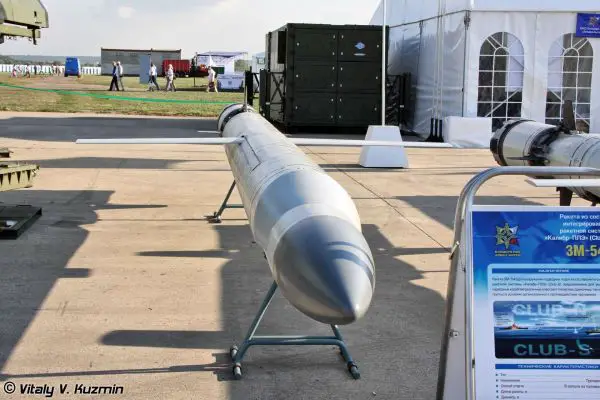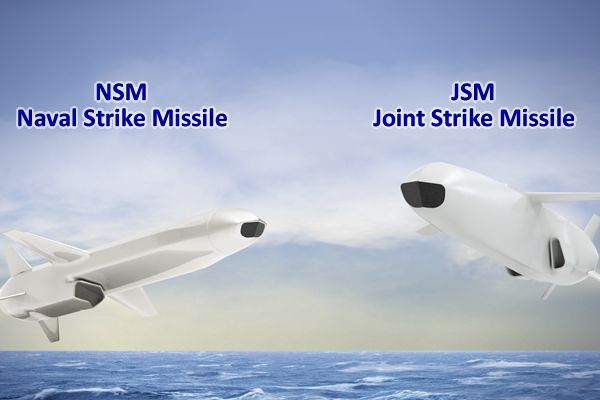Missiles.
SM-6 Standard Missile 6.

The Standard Missile 6 (SM-6) is a highly versatile and advanced shipborne surface-to-air and surface-to-surface missile developed by Raytheon for the United States Navy. Designed to provide extensive engagement capabilities against various threats, the SM-6 offers defense against ballistic missiles, air threats, and cruise missiles while also serving in an anti-surface role. The missile combines key technologies from previous Standard Missile variants and the Advanced Medium-Range Air-to-Air Missile (AMRAAM) program, incorporating a solid rocket booster and dual-thrust rocket motors from the SM-3 series, the airframe of the SM-2 series, and the active seeker and nosecone of the AMRAAM.
Country users: Australia, Japan, South Korea, United States
Description
The Standard Missile 6 (SM-6) is a American-made shipborne, multi-role missile system designed to counter a wide range of threats, including enemy aircraft, cruise missiles, ballistic missiles in their terminal phase, and enemy ships. Leveraging its AMRAAM-derived X-band active radar seeker, the SM-6 provides enhanced terminal guidance compared to earlier Standard Missile variants. This active seeker allows the missile to engage targets beyond the range of shipboard radars, which are limited by the curvature of the Earth. The SM-6's over-the-horizon engagement capability is a key element of the Navy Integrated Fire Control-Counter Air (NIFC-CA) concept, enabling the missile to work in conjunction with off-board sensors via the Cooperative Engagement Capability (CEC) network to engage distant targets effectively.
The producer of the Standard Missile 6 (SM-6) is Raytheon Missiles & Defense, a division of Raytheon Technologies Corporation. The company is based in Tucson, Arizona, United States. Raytheon is a leading defense contractor responsible for the development and production of a wide range of advanced missile systems, including the SM-6, which is a critical component of the U.S. Navy's air and missile defense capabilities.
Initially envisioned as an enhancement to the SM-2, the development of the SM-6 began in the early 2000s to address evolving air and missile threats. The first operational variant, SM-6 Block I, was fielded in 2013, providing fleet air defense against anti-ship cruise missiles and manned aircraft. In 2015, the Navy certified the missile for use on over 35 ships, expanding its deployment beyond the most advanced Aegis Baseline 9 platforms. The SM-6 Dual I, introduced in 2015, added the capability to engage short- to medium-range ballistic missiles in their terminal phase. As of May 2015, Raytheon had delivered 180 SM-6 interceptors, with plans for the U.S. Navy to acquire a total of 1,800 missiles. The latest version, SM-6 Block 1B, set for fleet delivery in 2027, incorporates a new second-stage rocket motor to extend the missile's range and further improve its surface-strike capability.
The SM-6 has also evolved to include an offensive strike capability against surface targets. In 2016, Secretary of Defense Ash Carter announced modifications that would allow the missile to perform long-range anti-ship strikes, transforming it into a dual-role weapon system. This capability was demonstrated during a classified test in January 2016, where an SM-6 successfully sank a decommissioned ship.
On July 16, 2025, the U.S. Army’s 3rd Multi-Domain Task Force (3MDTF) successfully executed the first-ever live fire of its Mid-Range Capability (MRC) outside the continental United States, firing a a Standard Missile-6 (SM-6).
SM-6 variants:
- SM-6 Block 1 (2013): Designed primarily for fleet air defense against anti-ship cruise missiles and manned aircraft threats. This version includes an AMRAAM-derived active seeker and supports Aegis Baseline 9 combat systems.
- SM-6 Dual I (2015): Introduced extended capabilities to intercept short- and medium-range ballistic missiles in their terminal phase, enhancing fleet defense against complex missile threats.
- SM-6 Block 1A (2020): Featured improved guidance systems for greater accuracy against maneuvering threats and additional anti-surface warfare capabilities via the Navy’s FCD mission expansion.
- SM-6 Block 1B (Expected 2027): Incorporates a more powerful second-stage rocket motor, extending the missile’s range and improving its ability to engage surface targets over the horizon.
Technical Data
-
Description
The SM-6 integrates components from earlier missile systems, combining the solid rocket booster and dual-thrust rocket motors from the SM-3, the airframe from the SM-2, and the active seeker and nosecone from AMRAAM. The missile is 5.8 meters (19 feet) long, with a diameter of 34 centimeters (13.5 inches) and a launch weight of approximately 1,000 kilograms (2,200 pounds). It is compatible with the Mark 41 Vertical Launch System (VLS), making it easily deployable aboard Aegis-equipped warships. The missile's dual-mode capability, featuring active and semi-active radar guidance, provides flexibility across different mission sets.
-
Warhead
The SM-6 is equipped with a blast-fragmentation warhead, optimized for anti-air missions. This warhead weighs 64 kilograms (141 pounds), significantly lighter than dedicated anti-ship missiles like the Harpoon, which carry warheads exceeding 200 kilograms (440 pounds). While the SM-6’s speed provides substantial kinetic energy, its warhead may not be sufficient to sink large, heavily armored ships but is capable of achieving a “mission kill” by disabling critical systems. The missile’s warhead is designed primarily for air-defense roles but has demonstrated effectiveness in anti-surface operations during tests.
-
Guidance Systems
The SM-6 employs a multi-mode guidance system combining midcourse and terminal phase capabilities. Initially, it follows an Inertial Navigation System (INS) path, with midcourse updates provided by the Aegis Weapon System (AWS) via shipborne radars and Link 16 data link communications. During the terminal phase, the missile transitions to its active radar seeker, derived from AMRAAM, operating in the X-band frequency for high-resolution targeting. The SM-6 can also operate in semi-active mode, similar to older SM-2 missiles, using shipboard illuminators for final targeting. This flexibility allows the missile to engage targets at long ranges and in complex electronic warfare environments.
-
Propulsion
The propulsion system consists of a dual-pulse solid rocket motor, delivering both an initial high-thrust boost and sustained propulsion during flight. This design enables the missile to achieve speeds exceeding Mach 3, with an operational range of 370 kilometers (200 nautical miles). The upcoming Block 1B variant will feature an improved second-stage rocket motor, further enhancing range and performance in anti-surface engagements.
-
Combat Use
The SM-6 is deployed aboard U.S. Navy surface combatants ships equipped with the Aegis Combat System, providing a multi-layered defense against air, surface, and ballistic missile threats. It offers long-range fleet air defense, intercepting airborne threats beyond the horizon using off-board sensors and the Cooperative Engagement Capability (CEC) network. Additionally, it provides a sea-based terminal defense against short- and medium-range ballistic missiles, contributing to the layered missile defense architecture. In an anti-surface role, the SM-6 has been adapted to engage enemy ships and land-based targets at extended ranges, supporting offensive operations against naval and coastal threats. The missile’s high speed and maneuverability make it a potent tool in both defensive and offensive scenarios.
The U.S. Navy plans to continue expanding the deployment of the SM-6 across its fleet and is evaluating potential future upgrades to enhance its capabilities further, including land-attack roles. Efforts are also underway to export the SM-6 to allied navies, with countries such as Australia, Japan, and South Korea expressing interest in acquiring the missile for their Aegis-equipped platforms.
Specifications
-
Type
Surface-to-air and surface-to-surface missile (anti-air, anti-missile, and anti-surface roles)
-
Country users
Australia, Japan, South Korea, United States
-
Designer Country
United States (Raytheon Missiles & Defense)
-
Engine
Dual-pulse solid rocket motor (with a combination of the SM-3 booster and SM-2 airframe)
-
Range
Approximately 150 nautical miles (278 kilometers) in air and missile defense roles
-
Speed
Mach 3+ (over 3,500 km/h or 2,200 mph)
-
Guidance Systems
- Inertial Navigation System (INS) for midcourse guidance
- Active radar homing for terminal guidance
- Semi-active radar homing mode
- Midcourse updates via Link 16 data link
- Cooperative Engagement Capability (CEC) integration for beyond-line-of-sight engagement -
Launch Weight
Around 2,200 pounds (1,000 kg)
-
Launcher Types
- Vertical Launch System (VLS)
- Compatible with Arleigh Burke-class destroyers, Ticonderoga-class cruisers, and other ships equipped with Aegis Combat System
- Mid-Range Capability Typhon Missile Launcher -
Dimensions
Length: 5.8 m; Diameter: 0.34 m; Wingspan: 1.4 m










































